Man-Made Space versus Natural Space in Greek Cult Caves, in: A. Haugg – A. Müller (eds.), Hellenistic Architecture and Human Action. A Case of Reciprocal Influence, Scales of Transformation in Prehistoric and Archaic Societies 10 (Leiden 2020) 161–181
Hellenistic Architecture and Human Action, 2020
The paper deals with man-made interventions in or around Greek sacred
caves. Although very limite... more The paper deals with man-made interventions in or around Greek sacred
caves. Although very limited artificial alterations are characteristic for sacred caves in the Greek motherland, a synoptic view of the evidence shows that many of the caves display but one or two. After a brief summary of the evidence and the problem of defining a sacred cave, various artificial elements present in the caves will be discussed. They concern both alterations to the natural setting and the building and setting up of features such as architecture (buildings, walls, terraces, altars), images of gods (sculpture and rock-cut elements), inscriptions and plantations. Although the cave was itself considered sacred, man-made modifications were used for delineating and defining space, both inside and outside the caves, for ritual and non-ritual purposes.

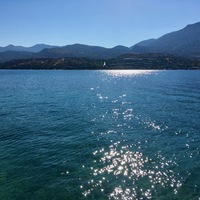

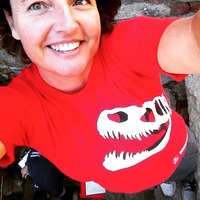

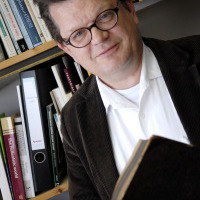

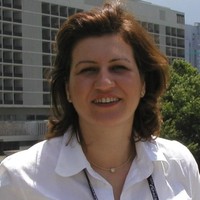
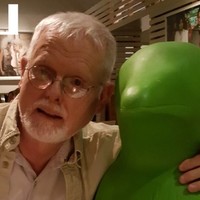

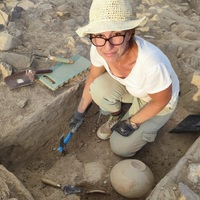
Uploads
Papers by Katja Sporn
caves. Although very limited artificial alterations are characteristic for sacred caves in the Greek motherland, a synoptic view of the evidence shows that many of the caves display but one or two. After a brief summary of the evidence and the problem of defining a sacred cave, various artificial elements present in the caves will be discussed. They concern both alterations to the natural setting and the building and setting up of features such as architecture (buildings, walls, terraces, altars), images of gods (sculpture and rock-cut elements), inscriptions and plantations. Although the cave was itself considered sacred, man-made modifications were used for delineating and defining space, both inside and outside the caves, for ritual and non-ritual purposes.
the DAI was founded, the annually awarded travel
grants for young post-doctoral researchers had been established
by the Central Direction (Executive Committee).
Already in the very first year, the two beneficiaries
Alexander Conze and Adolf Michaelis travelled to
Greece. The purpose was to further the interests of the
Institute where possible, which at that time, of course,
still meant the department in Rome.
The grant holders were expected to write reports after
the end of their travel, some of which were published.
Even after the foundation of the Athens department in
1874, travels by grant holders as well as staff members of
the Institute, continued to play a significant role in the
institute’s research activities. The exploration of the
country was key to understanding the topography of
Greece and to gaining an overview of its ancient sites
and monuments. Many of the research results were published
soon afterwards in the Athenische Mitteilungen.
Wilhelm Dörpfeld, in particular, travelled extensively
even after the end of his active career as the Institute’s
director. The structure of the groups as well as the aims
of the travels changed over time, just as the commitments,
tasks and possibilities of the travelling grant holders.
The paper intends to offer an insight into the travels
of the Institute taking as example some grant reports
from the 1920s.
caves. Although very limited artificial alterations are characteristic for sacred caves in the Greek motherland, a synoptic view of the evidence shows that many of the caves display but one or two. After a brief summary of the evidence and the problem of defining a sacred cave, various artificial elements present in the caves will be discussed. They concern both alterations to the natural setting and the building and setting up of features such as architecture (buildings, walls, terraces, altars), images of gods (sculpture and rock-cut elements), inscriptions and plantations. Although the cave was itself considered sacred, man-made modifications were used for delineating and defining space, both inside and outside the caves, for ritual and non-ritual purposes.
the DAI was founded, the annually awarded travel
grants for young post-doctoral researchers had been established
by the Central Direction (Executive Committee).
Already in the very first year, the two beneficiaries
Alexander Conze and Adolf Michaelis travelled to
Greece. The purpose was to further the interests of the
Institute where possible, which at that time, of course,
still meant the department in Rome.
The grant holders were expected to write reports after
the end of their travel, some of which were published.
Even after the foundation of the Athens department in
1874, travels by grant holders as well as staff members of
the Institute, continued to play a significant role in the
institute’s research activities. The exploration of the
country was key to understanding the topography of
Greece and to gaining an overview of its ancient sites
and monuments. Many of the research results were published
soon afterwards in the Athenische Mitteilungen.
Wilhelm Dörpfeld, in particular, travelled extensively
even after the end of his active career as the Institute’s
director. The structure of the groups as well as the aims
of the travels changed over time, just as the commitments,
tasks and possibilities of the travelling grant holders.
The paper intends to offer an insight into the travels
of the Institute taking as example some grant reports
from the 1920s.
Apollo at Delphi, to a lesser extent for another oracular shrine of Apollo, the one at Abai, which is most probably to be identified with the sanctuary of Kalapodi. The land of the Phokians delineated by these two oracular sanctuaries comprised multiple poleis whose names are attested in the literary and epigraphical record.
At the same time, there are many sites with extant archaeological remains, which had been partly always visible or which came to light mainly through the investigations of the Ephorates of Fthiotida, Phokis and Boiotia. In recent years, the historical as well as the archaeological research has contributed to a better understanding of the Phokians. The conference aims to bring together scholars working on thearchaeological material and on the historical record, with a focus on the historical period, thus stimulating a re-evaluation of topographical, archaeological and historical questions.